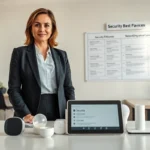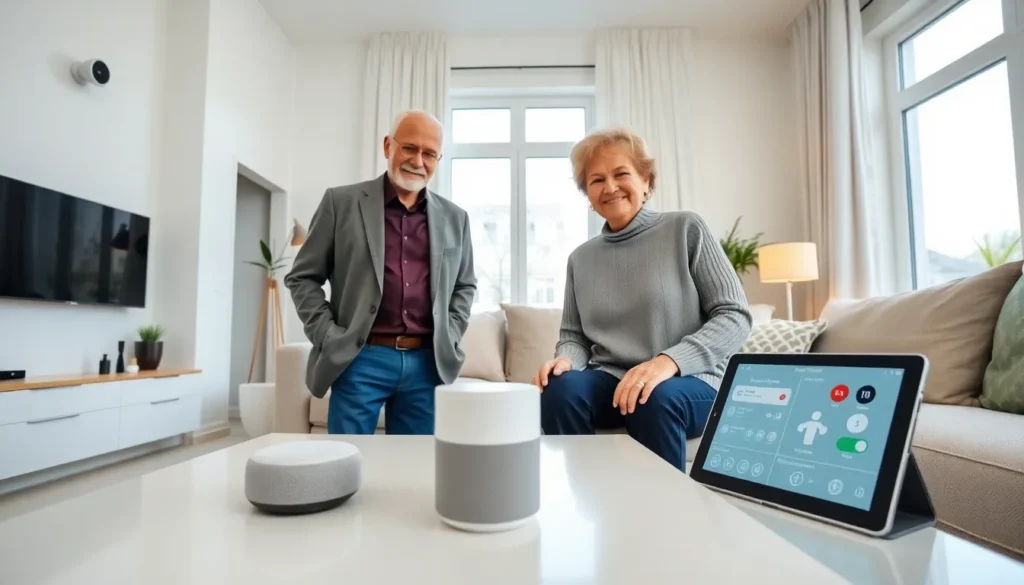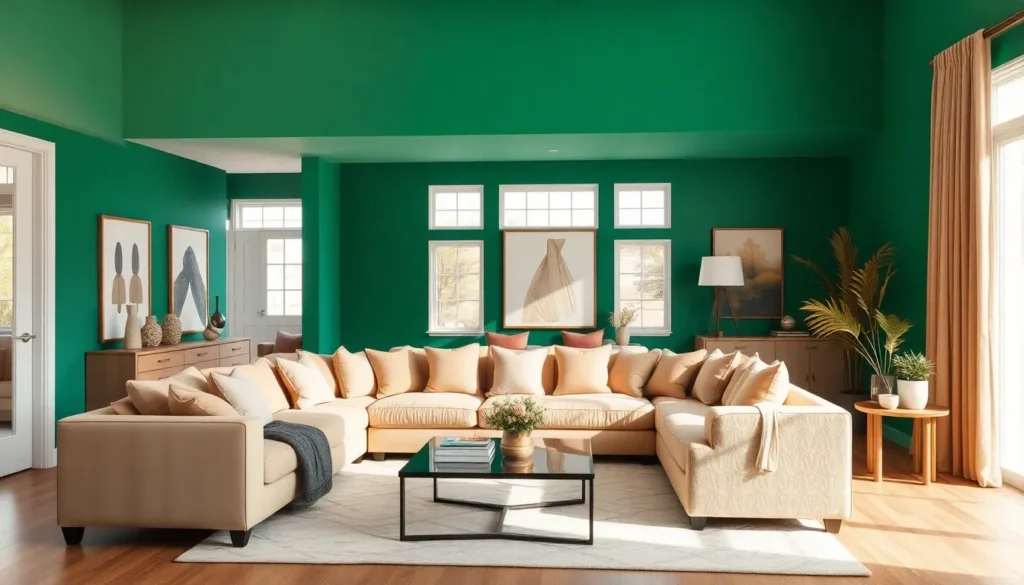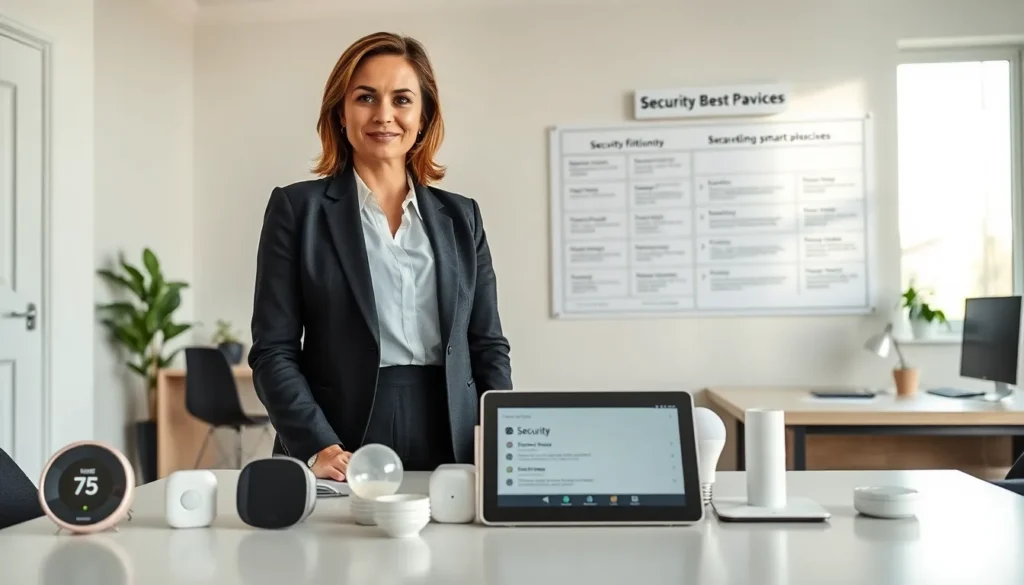In today’s world, the home office has become the new boardroom, and it’s time to make it a place where productivity meets personality. Imagine swapping out those stiff office chairs for a cozy bean bag or trading fluorescent lights for a sunlit corner with a view. A well-designed workspace at home not only boosts efficiency but also keeps the creative juices flowing—without the need for a tie.
But let’s be real: working from home can feel like a never-ending episode of a sitcom where the main character struggles to find the perfect balance between comfort and professionalism. With a few clever tweaks, anyone can transform their cluttered corner into a stylish sanctuary. Get ready to dive into tips that’ll turn your home workspace from drab to fab, making those Zoom calls just a little more bearable and a lot more enjoyable.
Table of Contents
ToggleBenefits Of A Dedicated Workspace At Home
Creating a dedicated workspace at home offers significant advantages. This environment enhances both productivity and focus.
Increased Productivity
A designated workspace enhances productivity by setting clear boundaries for work hours. By separating work areas from relaxation zones, individuals can switch to work mode more effectively. According to a study, having a specific space for work can increase output by as much as 20%. Activation of positive routines is common for those with established workspaces. It fosters a sense of commitment to tasks, encouraging employees to complete projects efficiently.
Improved Focus
Improved focus is another key benefit of a dedicated workspace. A clutter-free, organized area minimizes distractions and promotes concentration. Research shows that workers in structured environments demonstrate higher levels of focus than those in shared or chaotic spaces. Designing a workspace tailored to personal needs significantly boosts concentration levels. Additionally, the psychological associations tied to a specific space help reinforce work identity, leading to increased engagement.
Essential Elements Of A Home Workspace
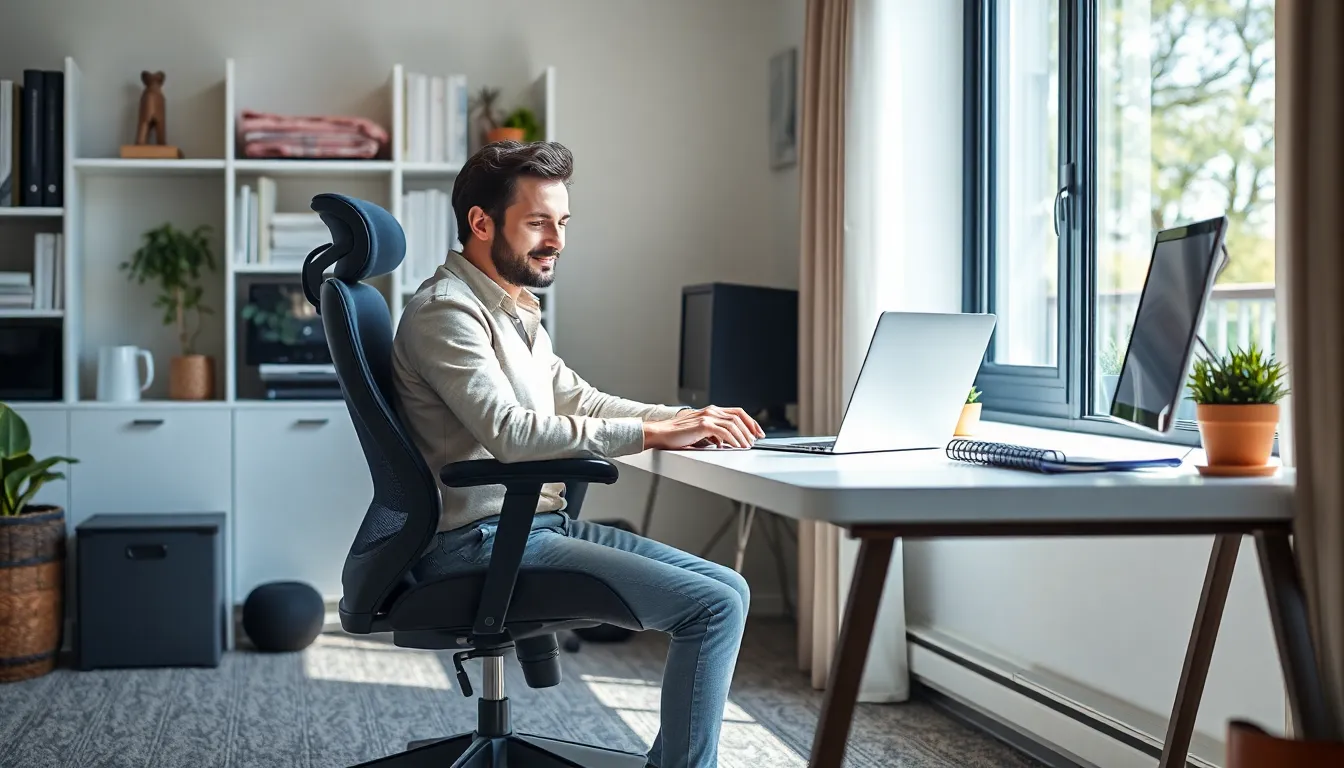
Creating an effective home workspace involves incorporating essential elements. These components significantly enhance productivity and comfort.
Ergonomic Furniture
Ergonomic furniture plays a crucial role in maintaining comfort during long work hours. Chairs should support the lower back, promoting good posture and reducing strain. Desks must be at the right height to facilitate smooth typing and reduce wrist discomfort. Adjustable furniture caters to individual needs, ensuring proper alignment for various body types. Many studies indicate that proper ergonomics can decrease the risk of musculoskeletal disorders by up to 60%. Investing in quality ergonomic furniture not only improves physical well-being but also contributes to overall job satisfaction.
Proper Lighting
Proper lighting creates an inviting and productive atmosphere at home. It eliminates eye strain and enhances focus, especially in low-light conditions. Natural light is ideal, so positioning work areas near windows maximizes brightness and boosts mood. When natural options aren’t feasible, consider using adjustable task lighting, which focuses light on specific areas. Soft, warm lighting can create a calming environment, while bright, cool lighting energizes the workspace. Effective lighting can increase productivity by 15%, making it a necessary element in any home office setup.
Tips For Designing Your Workspace At Home
Creating a tailored home workspace boosts productivity and satisfaction. Consider the following aspects to enhance your home office.
Personalization
Incorporating personal touches makes a workspace inviting. Adding decor that reflects individual personality, like artwork or family photos, boosts motivation. Choosing colors that inspire focus, such as calming blues or energizing yellows, creates a positive vibe. Customizing the workspace with meaningful items fosters creativity. Implementing preferred scents with essential oils can enhance mood, making the environment more comfortable. Adjusting the layout to suit personal workflow patterns also contributes to overall productivity, as comfortable spaces encourage longer, more effective work sessions.
Organization Strategies
Effective organization maximizes efficiency in a home workspace. Implementing storage solutions, such as filing cabinets or shelves, reduces clutter and improves accessibility. Creating designated areas for different tasks can enhance focus. Using planners or digital tools helps manage time effectively. Prioritizing essential supplies within arm’s reach minimizes disruptions during work. Adopting a minimalist approach keeps distractions at bay, emphasizing only what is necessary for productivity. Evaluating workspace ergonomics and setup regularly ensures ongoing comfort and effectiveness, leading to sustained performance throughout the workday.
Common Mistakes To Avoid
Creating an effective workspace at home involves recognizing common pitfalls. Avoiding these mistakes enhances productivity and comfort.
Distractions
Minimizing distractions is crucial for maintaining focus. Identify common distractions, such as noise from TVs or other household activities, which can disrupt concentration. Establishing boundaries with family members during work hours prevents interruptions. It’s also beneficial to turn off non-essential notifications on devices, as these can divert attention. Keeping the workspace organized can further reduce visual distractions. Utilizing noise-canceling headphones sometimes helps create a focused environment, allowing for deeper engagement in tasks. Ensuring a designated area for work fosters a stronger work mindset and minimizes distractions.
Poor Layout
An effective layout significantly impacts productivity. Avoid cluttered desks and ensure easy access to essential items. Arranging furniture to create separate zones for different activities can enhance workflow. Positioning the desk near a window maximizes natural light, resulting in a more inviting atmosphere. Incorrectly aligned monitors can strain the eyes and impair comfort; proper height alignment is crucial. Organizing cables and accessories results in a cleaner workspace. Regularly reevaluating the layout can help adapt to changing needs, ensuring sustained efficiency and comfort.
Creating an effective workspace at home is essential for productivity and well-being. By prioritizing comfort and organization individuals can transform their home offices into environments that inspire creativity and focus. Personal touches and thoughtful design choices not only enhance aesthetics but also boost motivation.
Regularly assessing the workspace ensures it meets evolving needs and maintains a balance between professionalism and comfort. Emphasizing ergonomics and proper lighting can significantly impact overall efficiency and health. With these strategies in place, anyone can cultivate a home workspace that supports their best work while fostering a sense of personal style.







